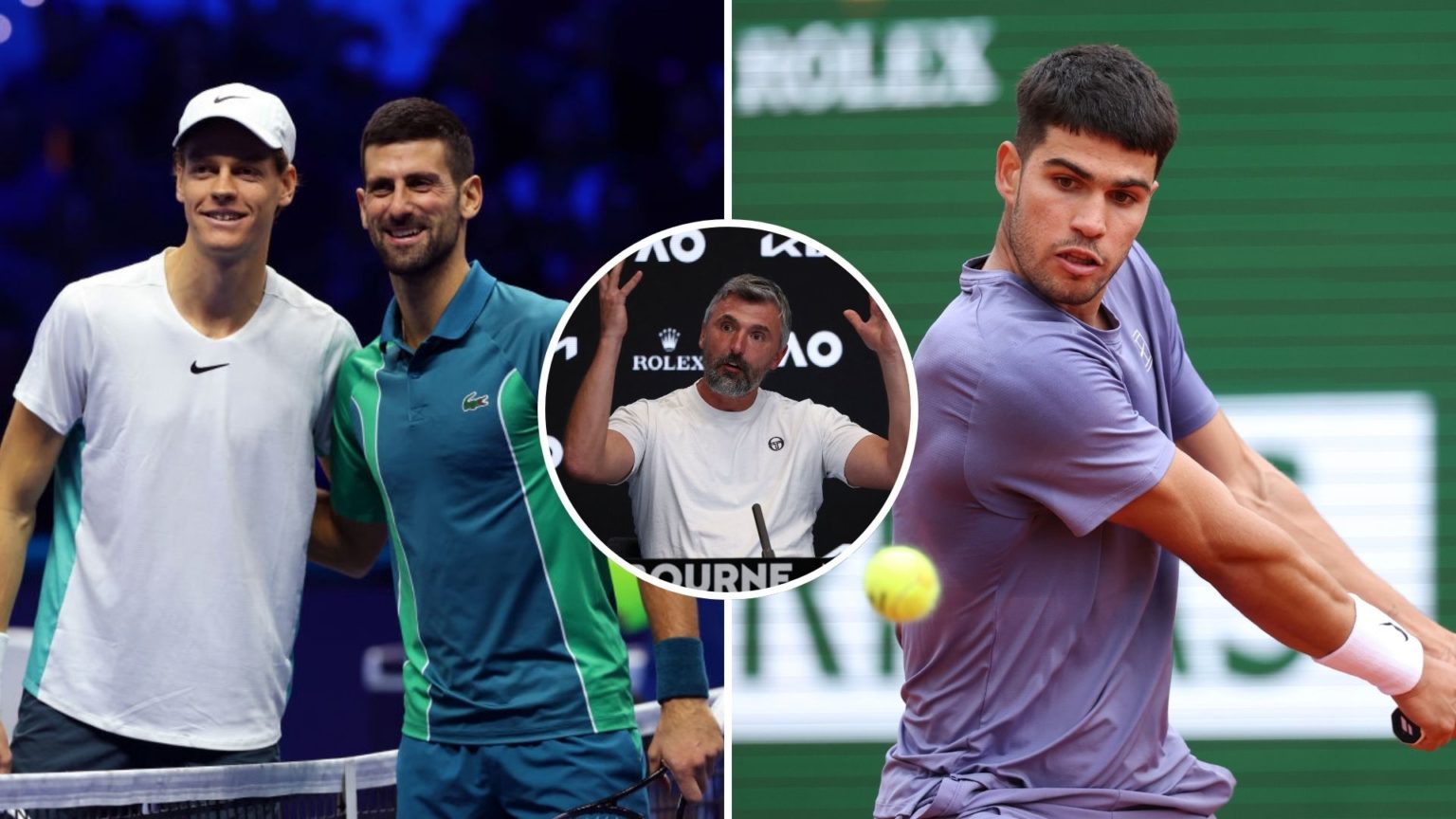
In the ever-evolving landscape of men’s tennis, where precision and consistency often reign supreme, Carlos Alcaraz stands out as a dazzling enigma. Goran Ivanisevic, the former Wimbledon champion and longtime coach of Novak Djokovic, recently shared a compelling perspective on what sets the young Spaniard apart from his peers, particularly world number one Jannik Sinner and the legendary Djokovic. At just 21, Alcaraz plays with a mercurial flair that captivates fans and frustrates opponents, a style Ivanisevic finds both unpredictable and mesmerizing.
Alcaraz’s game is a kaleidoscope of brilliance and volatility. Unlike Sinner and Djokovic, who Ivanisevic likens to relentless machines, Alcaraz dances between moments of sheer genius and unexpected lapses. “It’s not easy, but you just get used to it,” Ivanisevic remarked, reflecting on the mental rituals players use to stay grounded. He described how top players must remain vigilant, as “once they smell blood, you’re done.” For Djokovic and Sinner, this translates to a predatory consistency. “Sinner is like that. Novak is like that,” he said, noting their ability to grind opponents into submission. Sinner, in particular, is a “shark” who, once he grabs hold, “doesn’t let go.” Alcaraz, however, is different. “Alcaraz plays one set, and you may not win a single point. But then he gives you the next,” Ivanisevic observed, capturing the Spaniard’s rollercoaster-like unpredictability.
This unpredictability was on full display in Alcaraz’s recent match against Francisco Cerundolo at the Monte Carlo Masters. The Spaniard dropped the first set, his shots veering wildly, only to roar back and concede just one more game. It was a microcosm of his 2025 season, where only half of his victories have come in straight sets—a stark contrast to Sinner’s commanding 71% straight-sets win rate, albeit in limited matches due to a doping-related ban. Djokovic, too, has matched Alcaraz’s 50% mark this year, but his methodical approach feels worlds apart from the Spaniard’s high-wire act. Ivanisevic’s preference for watching Alcaraz stems from this very dynamism. While Sinner and Djokovic are “ruthless” in their consistency, Alcaraz’s oscillations make every match a spectacle.
What fuels this difference? Alcaraz’s game thrives on audacity. His forehand can unleash winners that defy geometry, and his drop shots—executed with a magician’s sleight—leave opponents stranded. Yet, this same boldness leads to errors that more disciplined players like Sinner avoid. Sinner’s groundstrokes, honed to laser-like precision, and Djokovic’s unparalleled court coverage create a suffocating pressure that Alcaraz sometimes sidesteps with his improvisational flair. It’s a high-risk, high-reward style that has already earned him four Grand Slam titles, including a maiden Monte Carlo crown in 2025, but also accounts for moments where he seems to lose his way.
Ivanisevic’s insights reveal a deeper truth about Alcaraz’s psyche. Unlike Sinner, whose metronomic focus mirrors Djokovic’s, Alcaraz plays with an almost childlike joy, embracing the court as a canvas for creativity. This approach makes him vulnerable to dips, as Ivanisevic noted, but also capable of turning matches on their head. Against Cerundolo, his first-set mistakes gave way to a torrent of winners, showcasing a resilience that complements his flair. “Everyone has their own way,” Ivanisevic said of players’ rituals, and for Alcaraz, that way is a blend of instinct and inspiration.
The contrast extends beyond the court. Sinner’s rise to the top has been marked by a quiet intensity, his banned status in 2025 only adding to his mystique. Djokovic, at 37, remains the benchmark, his hunger undimmed by time. Alcaraz, however, is the sport’s showman, his smile as disarming as his backhand. Fans adore him for it, and Ivanisevic admitted he’s more drawn to watching Alcaraz than the others, even if Sinner’s consistency edges him out in their head-to-head (Alcaraz leads 6-4 overall but went 3-0 in 2024).
As tennis braces for another chapter in this riveting rivalry, Alcaraz’s unpredictability remains his calling card. Will he harness his brilliance into Sinner-like consistency, or will he continue to dazzle with his wild swings? Ivanisevic’s observations suggest the latter, and for now, that’s what makes Alcaraz a singular force. In a sport often defined by control, he plays like a storm—beautiful, chaotic, and impossible to ignore.
Leave a Reply